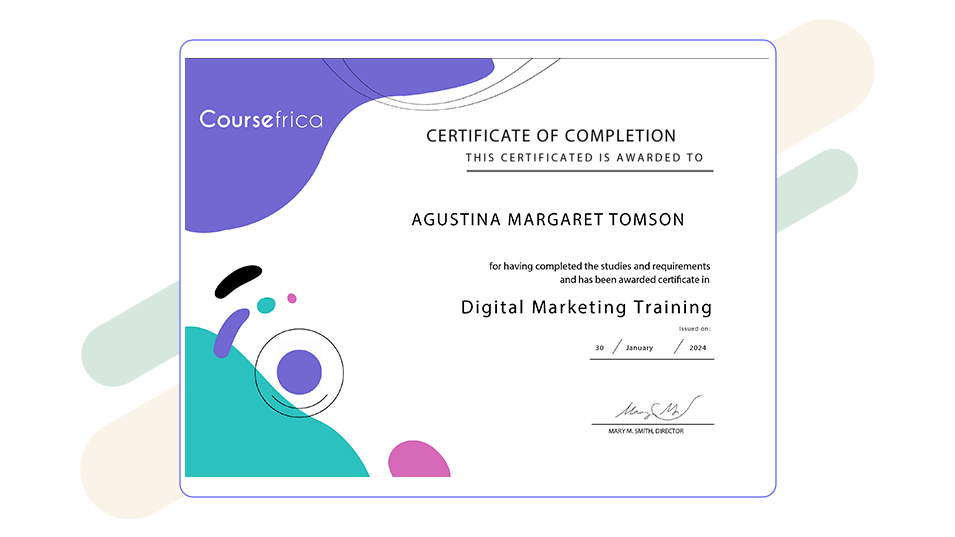
Lean Six Sigma Green Belt
Lean Six Sigma Green Belt Certification in United Kingdom
Are you seeking to improve processes and reduce errors , acquiring essential project management skills, fostering team collaboration, drive value and to enhance service quality and business growth in your organizations. Keep your interests no longer at bay! Acquire StudySail’s certification in Lean six sigma Green belts in Kenya. Explore how to:
- Implement cost-saving initiatives by streamlining operations
- Lead process improvement projects that drive measurable results
- Foster a culture of continuous improvement within your organization
- Reduce defects and variation to ensure consistent quality outcomes
- Analyze data statistically to make informed, data-driven decisions
- Identify and eliminate waste in processes to enhance efficiency

UPCOMING CLASSES
SELECT AN UPCOMING CLASS
LEAN SIX SIGMA GREEN BELT CERTIFICATION HIGHLIGHTS
The Most Effective Lean Six Sigma Green Belt Course in United Kingdom
High-class engagement during offline and live instruction
Practical statistical software experience tackling real-life project challenges
Q&A webinars with experts to give and receive feedback
Group problem solving simulating project work experience
Explore the recent trends in the evolving world of AI, data analysis and project management
Evaluate privacy and ethical considerations for personal and organizational security
UPCOMING CLASSES
SELECT AN UPCOMING CLASS
Lean Six Sigma Green Belt Curriculum
WHAT WILL I LEARN?
Module Info and Overview
This is the introductory module that will set the foundation for the Lean Six Sigma course. You will first understand what Lean Six Sigma is in detail by exploring the origins of Lean Six Sigma, the core philosophies, terms and how it’s applied to work. This unit will give you a comprehensive understanding of Lean Six Sigma principles, history, key concepts and it’s importance. Key things you will learn include:
- The history and evolution of Lean Six Sigma
- The importance of process improvement in organization and how Lean Six Sigma plays a role
- The different roles of Sigma belts (Green, yellow, black)
- Basic terminologies and concept related to Lean Six Sigma
- The benefits of implementing Lean Six Sigma in various sectors of business
- The importance of Green Belts and how they influence work in organizations
Module Info and Overview
In this unit, you delve deeper into the different tools that are essential in Lean Six Sigma. You will also learn about statistical techniques used in Six Sigma and equip you with the knowledge to analyze data, identify process variation and implement improvements. You will focus on:
- The five principles of Lean (Value, Value Stream, Flow, Pull and Perfection)
- Understanding Lean tools such as value stream mapping, Kaizen and Just in Time (JIT)
- The basics of statistical analysis and to apply it to process improvement
- Statistical processes control (SPC) and use of tools such as control charts and hypothesis testing
- Descriptive statistics, data visualization techniques, probability distribution and their applications
- Design of Experiments (DOE) principles and methods and how to apply DOE to solve complex problems
Module Info and Overview
DMAIC is the cornerstone of Lean Six Sigma projects and this unit introduces the DMAIC methodology. It will guide you through the DMAIC framework, the phases steps of defining a problem, measuring its state, analyzing data, making improvements and controlling new processes. You will learn about:
- Identifying the project goals and problems
- How to collect data to understand the current performance
- How to identify the root causes of inefficiencies and how to solve them
- Developing and implementing solutions to address root causes
- Establishing controls to sustain improvements overtime
- How to apply the DMAIC methodology to solve problems and improve processes
- The role of data driven decision making in the DMAIC process
Module Info and Overview
Get ready to learn how to create process maps and value streams to visualize workflows and identify areas of improvement. This unit emphasizes the importance of mapping in Lean Six Sigma projects. By the end of it, you will be able to understand:
- The benefits and purpose of process mapping
- The different types of process maps such as flowcharts and swimlane diagrams
- How to create value stream maps to identify waste and efficiencies
- Techniques for analyzing and improving processes based on mapping results
- The role of mapping in project documentation ans stakeholder communication
- How to use visual tools to facilitate discussions and drive improvements
Module Info and Overview
Root cause analysis is essential in Lean Six Sigma because of its effectiveness in problem solving. This topic will teach you the different techniques of identifying the root causes of problems and processes and how to apply these techniques to develop effective solutions. In this unit, you will cover:
- The importance of identifying root causes rather than symptoms
- How to conduct effective brainstorming sessions to uncover root causes
- The role of data in supporting root cause identification
- The different strategies for validating and prioritizing root causes
- Using techniques such as Pareto Analysis and the 5 Whys to address issues and find sustainable solutions
Module Info and Overview
This is one of the key modules that will really influence your career as a Lean Six Sigma Green Belt professional. Get ready to learn the core principles of Lean Methodology, focusing on waste reduction and process efficiency. You will learn the importance of creating values for customers and how to maximize value while minimizing waste. You will delve into:
- The seven types of waste (transportation, inventory, motion, waiting, overproduction, over-processing and defects)
- Techniques for identifying and eliminating waste in processes
- The concept of continuous improvement and its application in work
- Tools such as 5 S- sort, set in order, shine, standardize, sustain for workplace organization
Module Info and Overview
Control charts are essential tools for Lean Six Sigma professionals. This unit focuses on control charts and their role in monitoring process performance. You will also learn how to use controls charts to maintain process stability and quality. This topic will cover:
- The purpose and types of control charts such as X-bar, R-chart and P-chart
- How to create and interpret control charts
- The importance of process capability analysis
- The techniques for identifying trends and variations in data
- Strategies for implementing process controls to sustain improvements
- Monitoring processes effectively to ensure they remain within acceptable limits
Module Info and Overview
Project management is one key component when it comes to Lean Six Sigma. In this topic, you will learn about the essential project management skills needed for leading Lean Six Sigma initiatives. You will delve into the importance of effective project management in achieving successful outcomes and how to manage projects from initiation to closure effectively.You will explore:
- The role of project manager in Lean Six Sigma projects
- Key project management concepts and methodologies
- Tools for managing project teams and stakeholder communication
- Strategies for risk management and mitigation to drive organizational change
- Techniques for project planning, execution and monitoring
- Understanding team roles and leading teams, resolving conflicts to ensure successful completion of projects
Module Info and Overview
This topic will discuss the principles of change management and how to effectively implement changes within an organization. Since change management is crucial for the success of Lean Six Sigma success, you will learn the strategies for overcoming resistance to change. You will learn:
- Models of change management such as Koters 8 step process
- The techniques for communicating change effectively to teams or stakeholders
- The importance of change management in process improvement
- Tools for measuring the impact of change to ensure sustainability
- Strategies for engaging employees and fostering a culture of continuous improvement
- How to facilitate successful transitions and increase effectiveness of Lean Six Sigma projects
Module Info and Overview
Preparing for the certification exams is a crucial step in your Lean Six Sigma journey. In this final module, you will learn how to prepare for the Lean Six Sigma Green Belt certification exams.This topic will teach you different strategies for effective study and exam answering techniques. You will learn:
- The structure and format of the Lean Six Sigma Green Belt certification exam
- The key topics and concepts to ficus on in preparation for exams
- Effective study techniques and various resources to help you prepare well for the exam
- Tips for managing exam anxiety during the test especially for beginners
- How to interact with other professionals after the certification to increase job opportunities
WHY STUDYSAIL
The StudySail Advantage
Up-to-Date Curriculum
Learn recent trends in the industry such as the integration of AI as a tool
Both Live and Recorded Training
Great learning journey through dynamic interactive class discussions
Real-Life Experiences and Projects
Gain practical skills through solving real problems with great confidence
Unlimited Access to Curriculum Content
Learn at your own pace and gain a comprehensive understanding of Project Management
Access to Project management Peers and Professionals
Network, share, and connect with a worldwide community of Project Managers
Career Guidance by Industry Leaders
Be empowered through feedback and key career-related insights
WHAT YOU’LL LEARN IN THIS LEAN SIX SIGMA GREEN BELT TRAINING
Learning Objectives
Understanding Lean Six Sigma Principles
Gain a solid understanding of the core principles of Lean Six Sigma and their importance in process improvement
Master the DMAIC Framework
Learn to apply the DMAIC (Define, Measure, Analyze, Improve, Control) methodology effectively
Data Analysis and Statistical Tools
Develop proficiency in using statistical tools for data analysis and using them to make data driven decisions
Change Management Strategies
Understand how to manage change and strategies for overcoming resistance and successful implementation
Process Mapping and Value Stream Analysis
Acquire the skills to create maps and conduct value stream analysis to visualize workflows and find areas of waste
Great Professional Development
Prepare for Lean Six Sigma Green Belt certification and learn how to enhance professional growth
PREREQUISITES FOR LEAN SIX SIGMA GREEN BELT CERTIFICATION COURSE
Prerequisites and Eligibility
- This course is mainly for those who have experience in supply chain management and business management and are interested in terminologies such as waste reduction and continuous improvement. The certificate increases the candidate’s proficiency, which makes them more attractive to employers.
- To get more information, please view the FAQs.

WHO SHOULD ATTEND THE LEAN SIX SIGMA GREEN BELT COURSE ONLINE
Who This Course Is For
- Project Managers
- Process Engineer
- Six Sigma Consultant
- Production Engineer
- Quality Engineer
- Mechanical engineer
- Reliability engineer
- Supply chain managers
- Analysts

GET THE LEAN SIX SIGMA GREEN BELT CERTIFICATION
Earn the Coveted Lean Six Sigma Green Belt Certification
Once you complete the Lean Six Sigma Green Belt course, you will obtain StudySail’s Lean Six Sigma Green Belt certification. You will be able to showcase your knowledge and expertise in coordinating, leading and analyzing projects service management best practices, processes, terminologies and techniques prevalent in modern technology, providing project analysis solutions to a wide array of clients across various both public and private sectors. This certification will cause you to stand out in this current digital project analysis revolution in United Kingdom and beyond. Furthermore, you will have an opportunity to join the growing global community of Project Analysts and Project Managers and Engineers.

FREQUENTLY ASKED QUESTIONS
Lean Six Sigma Green Belt Training & Exams
What is the Lean Six Sigma Green Belt?
Lean Six Sigma Green Belt is a professional certification that focuses on process improvement and operational efficiency. It normally combines the principles of Lean, which aims to eliminate waste, with Six Sigma, which focuses on reducing variation and defects. Green Belts are skilled team members who lead small-scale improvement projects and support larger initiatives led by Black Belts. Green Belts play a critical role in driving continuous improvement within organizations. Key aspects of Lean Six Sigma Green Belt include:
- Process Improvement: Identifying inefficiencies and implementing solutions to streamline operations.
- Data-Driven Decision Making: Using statistical analysis to identify root causes of problems and measure improvements.
- Project Leadership: Leading teams on improvement projects, applying Lean Six Sigma tools and methodologies.
- Cost Reduction: Reducing waste and defects to lower costs and improve profitability.
- Quality Enhancement: Ensuring that processes deliver consistent, high-quality outcomes.
Customer Focus: Improving processes to better meet customer needs and expectations.
What Are the Benefits of Lean Six Sigma Green Belt?
Lean Six Sigma Green Belt provides valuable skills that contribute to both personal growth and organizational success. It’s particularly useful for developing skills in team leaders and team members wanting to be able to solve localized team-based problems. It benefits both the organizational and individual in:
- Enhanced Problem-Solving Skills: Equips professionals with tools to identify, analyze, and solve process inefficiencies.
- Career Advancement: Increases opportunities for leadership roles in process improvement and operational excellence.
- Data-Driven Decision Making: Trains professionals to use statistical analysis for making informed decisions.
- Cost Reduction: Helps organizations reduce waste, defects, and unnecessary costs, leading to higher profitability.
- Improved Process Efficiency: Streamlines operations, leading to faster and more consistent outcomes.
- Quality Improvement: Focuses on reducing variation and defects, resulting in higher-quality products and services.
- Customer Satisfaction: Enhances processes to better meet customer needs, improving overall satisfaction.
- Cross-Functional Collaboration: Encourages teamwork and collaboration across departments to achieve common goals.
Can Lean Six Sigma Green Belt be self-taught?
Indeed, you can take the path of learning Lean six sigma on your own if training is not suitable for you. There are a lot of free and paid resources which you can utilize to get started. Ensure that you are consistent with your learning and participate in hackathons and project contributions so as to practically apply theory lessons.
How long does it take to learn the Lean Six Sigma Green Belt?
It takes ten weeks to complete the Lean Six Sigma Green Belt Online Certification course, 8 weeks for the Lean Principles course, and 16 weeks for the Lean Six Sigma Black Belt course.
Does a Lean Six Sigma Green Belt expire?
Upon passing the Green Belt certification exam, you will receive a globally recognized LSSGB certification and ID license number. The program is fully online, self-paced and does not have an expiration date..
Is Lean Six Sigma Green Belt better than Project Management Professional (PMP)?
Between the PMP and Six Sigma certifications, one is not better than the other. They just have different focus areas. If you want to be a project manager, you choose PMP. If you want to work in quality assurance or process improvement, go for the Six Sigma certification.
Are Lean Six Sigma Green Belt exams difficult?
Training becomes considerably more difficult at the Green Belt and Black Belt levels.This is because you will start getting into statistical analysis at this level. Statistics is an integral part of understanding how to improve a process.
Does a Lean Six Sigma Green Belt expire?
Upon passing the Green Belt certification exam, you will receive a globally recognized LSSGB certification and ID license number. The program is fully online, self-paced and does not have an expiration date.
What is the difference between Six Sigma Green Belt and Lean Green Belt?
Six Sigma focuses on reducing defects and variability through statistical analysis to achieve nearly defect-free processes. Lean methodology emphasizes minimizing waste and maximizing value, streamlining operations to enhance efficiency and product quality.
Which is better, Scrum Master or Six Sigma?
Neither approach is strictly better in every situation. Both Scrum and Six Sigma come with unique benefits, requirements, and considerations. In the end, your company's goals and the nature of the project should dictate which approach you opt for.
Can I learn Six Sigma Green Belt without Yellow Belt?
Do I need to complete the Lean Six Sigma Yellow Belt course before the Green Belt course? No. The Yellow Belt course is not a prerequisite for the Green Belt course. It is intended to provide front-line staff, shop floor operators, etc.
Is Lean Six Sigma in demand?
Lean Six Sigma professionals are in demand in various industries, including manufacturing, healthcare, finance, IT and more. The methodology's versatility makes it applicable across multiple sectors.
Who is eligible for Lean Six Sigma?
There are no prescribed eligibility criteria to take up any of the Six Sigma certifications. But, a certain amount of work experience and training is required by a candidate willing to take any of the certifications offered at various levels.
Where Do I Learn Lean Six Sigma?
In Kenya, there are various training centers where you can learn Lean six sigma which include online courses , bootcamps and universities. Select which institution is suitable by taking into consideration your availability, learning style, finances, career goals and dedication to the course.
What is the difference between Yellow Belt and Green Belt Six Sigma?
Yellow-Belt courses will introduce you to the Lean way of thinking and to the basic methods of Lean Six Sigma. They are designed specifically for team members working on innovative projects. Green-Belt courses are designed for future project managers of innovative projects.

Lean Six Sigma Green Belt Career Related FAQs in United Kingdom
What Skills are essential for a successful Lean Six Sigma Green Belt career?
To become a successful Lean Six Sigma Green Belt in Kenya, you need a combination of skills to ensure. Here are the core skills you need:
Analytical Skills
Having the ability to analyze data and identify trends is very crucial as Green Belts requires effective interpretation of complex information to make informed decisions
Problem-solving skills
Since Lean Six Sigma focuses on identifying and solving problems, you will need to be able to find root causes and make decisions that will improve processes to implement effective solutions
Project Management
Being able to manage projects from start to finish, including planning, executing, and monitoring projects to ensure they meet the set goals is vital for a Lean Six Sigma professional
Communication Skills
Clear communication is necessary for collaborating with team members and stakeholders as Green Belts must convey ideas and findings effectively
Leadership and Management Skills
Leadership is important for guiding teams, influencing others toward improvement, and managing change.
How do I become a certified Six Sigma Green Belt professional in Kenya?
Becoming a certified Six Sigma Green Belt in Kenya is a straightforward process. Here is how:
- Choose a Reputable Training Provider
Research and choose a training provider that is accredited by a recognized body like IASSQ and choose an institution that meets your needs and budget whether it's online or in-person.
- Complete The Training Course
Ensure that the training covers Lean Six Sigma principles. DMAIC methodology, statistical tools, and practical applications. Complete all the learning hours in order to get the certification
- Pass the Certificate Exams and Obtain a Certification
Once you have completed the training you will sit for an exam that tests your knowledge of the course to earn your certification
- Gain Practical Experience
Once you have the certification, get some hands-on experience through internships or projects, especially if you are starting out in the field, and gain experience to showcase that you can apply the Lean Six Sigma tool at work.
How can the Lean Six Sigma Green Belt boost my career?
Lean Six Sigma Green Belt certification can boost your career in many ways. First, it will equip you with valuable skills that are in high demand in many industries. The certification can also lead to increased job opportunities and promotions at work as many employers prioritize professionals with this certification. The knowledge and skills learned in this course are also applicable in various sectors which allows you to explore different career paths that you are interested in. This is a ticket to better salaries as it demonstrates your expertise and sets you apart from other candidates.
What is the salary range for a Lean Six Sigma Green Belt in Kenya?
The salary range for a Lean Six Sigma Green Belt in Kenya can vary depending on experience, industry, or size of a company. However, the general entry-level positions may offer salaries starting from $388 to $620 per month. Mid-level professionals can expect to earn $620 and $1165 per month while more experienced and specialized professionals earn upwards of $1600, especially in manufacturing and finance industries where process improvement is very essential.
Can I pursue Lean Six Sigma Green Belt certification while working full-time?
Yes, you can. Our courses are designed to accommodate working professionals by offering flexible schedules such as evening, and weekend classes and fully online learning options. Balancing work and study requires good time management skills where you can allocate specific hours during the week for studying and working on assignments. Since many employers support their employees in obtaining certifications by offering flexible hours, you can plan your time well to invest in your career advancement with this certification.
How long does it take to earn a Lean Six Sigma Green Belt certification in Kenya?
Learning Lean Six Sigma Green Belt can take typically 4 weeks to a month but can take longer depending on the learning schedule you want. Being an online course, you can choose when and how to learn which can influence the time you take to finish the course. The time you spend on self-study and working on projects can also influence the overall duration. In general, you can expect to complete the certification process within one to three months, depending on your pace and structure.
How do I choose the right Lean Six Sigma Green Belt training program for my career?
Choosing the right Lean Six Sigma Green Belt training program is key to your career development. Start by finding accredited and industry-recognized programs for your certification. Choose the program aligned with your career goals and needs. Whether you are starting in your career, looking to advance your career, or looking for mentorship or networking opportunities alongside your learning, having a goal will guide you in finding the best program that fits your needs. Once you know your goals, ensure to get a program with experienced instructors and qualified trainers to increase the program's effectiveness.
What types of projects are suitable for a Lean Six Sigma Green Belt?
Lean Six Sigma Green Belt can work on a variety of projects aimed at improving processes and reducing waste. This certification can help you work on projects such as process improvement where you analyze existing processes to identify inefficiencies and implement changes to improve productivity. You can also work on projects focused on quality control, cost reduction, customer satisfaction, training and development, manufacturing and efficiency, or service delivery and enhancements. The good news is that Lean Six Sigma Green Belt certification allows you to work on different projects as it is applicable in many sectors.
Can Lean Six Sigma Green Belt certification help me start my consulting business in Kenya?
Certainly! Lean Six Sigma Green Belt certification is a valuable asset for a consulting business in Kenya. As a certified professional, you can offer consulting services to various industries by helping them implement Lean Six Sigma practices. The knowledge will enable you to analyze processes, identify areas of improvement, and guide them in executing effective solutions. It’ll also build credibility with potential clients by showing that you have undergone formal training and have the skills needed by organizations or business people.
How does this certification contribute to career advancement?
Lean Six Sigma Green Belt certification can contribute to your career advancement in many ways including:
- Improved skill set that is highly sought after by employers
- Increased job opportunities in different fields and industries
- Promotion potential as employers recognize the value of Lean Six Sigma Green Belt certification
- Qualifying for higher-paying positions with competitive salaries
- Helps you take on leadership roles in projects
- Professional growth through mentorship and collaboration opportunities
Is the Lean Six Sigma Green Belt certification worth investment for entry-level professionals?
Yes. Lean Six Sigma Green Belt certification is a worthwhile investment for entry-level professions because, in this competitive job market, the certification sets you apart from others and shows employers that you have what it takes. The training also equips you with practical skills that are applicable to different projects which makes you effective in your role. As an entry-level professional, this certification will open up doors for your career advancements by accelerating your career progression and career growth.
Is this certification valuable for freelancers in Kenya?
Yes. The Lean Six Sigma Green Belt certification is highly valuable for freelancers in Kenya. Having this certificate will set you apart from other freelancers and show potential clients that you are an expert in the field. Businesses that are looking for professionals who can help them streamline processes and improve productivity will prioritize you over other freelancers as it shows that you have the skills to do just that.
How do I maintain my Lean Six Sigma Green Belt certification?
To maintain this certification, continuous learning is essential. Engaging in self-directed learning such as reading relevant books or articles, and taking related short courses can help you to stay updated with changing technologies, methodologies, trends, and ways of doing things. Some organizations may however require you to retake the certification exams after a certain time so it is important to keep yourself updated with the specific requirements of certain fields or industries.
What career paths are best for Lean Six Sigma Green Belt certified professionals in Kenya?
As a Lean Six Sigma Green Belt professional, you can explore many career paths in various industries. One of the most common jobs is being a Quality Improvement specialist where you focus on improving processes to ensure products meet quality standards. Other career choices include: Project manager, operations manager, or process analyst. Note that your career path will depend on your interests and passions as well as your career goals.
What career fields can I venture into once I acquire the Lean Six Sigma Green Belt certification?
There are many fields you can venture into with the Lean Six Sigma Green Belt certification as many industries value improvement and quality management. There is a high demand for Lean Six Sigma Green Belt professionals in fields that highly depend on optimizing their operations for business success. Some of the leading fields with high demand for these professionals are:
- Manufacturing
- Healthcare
- Finance
- Business Consultation







